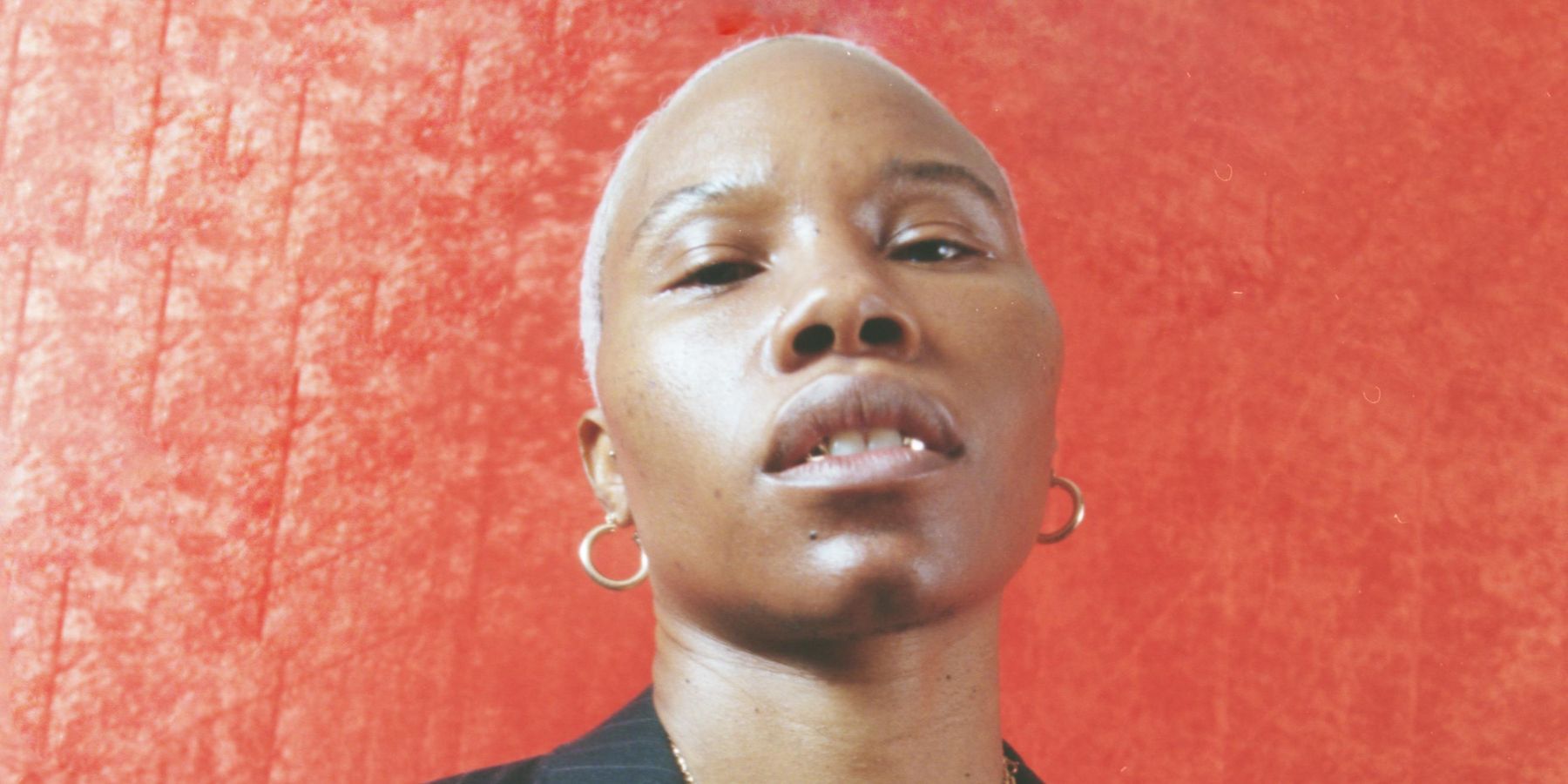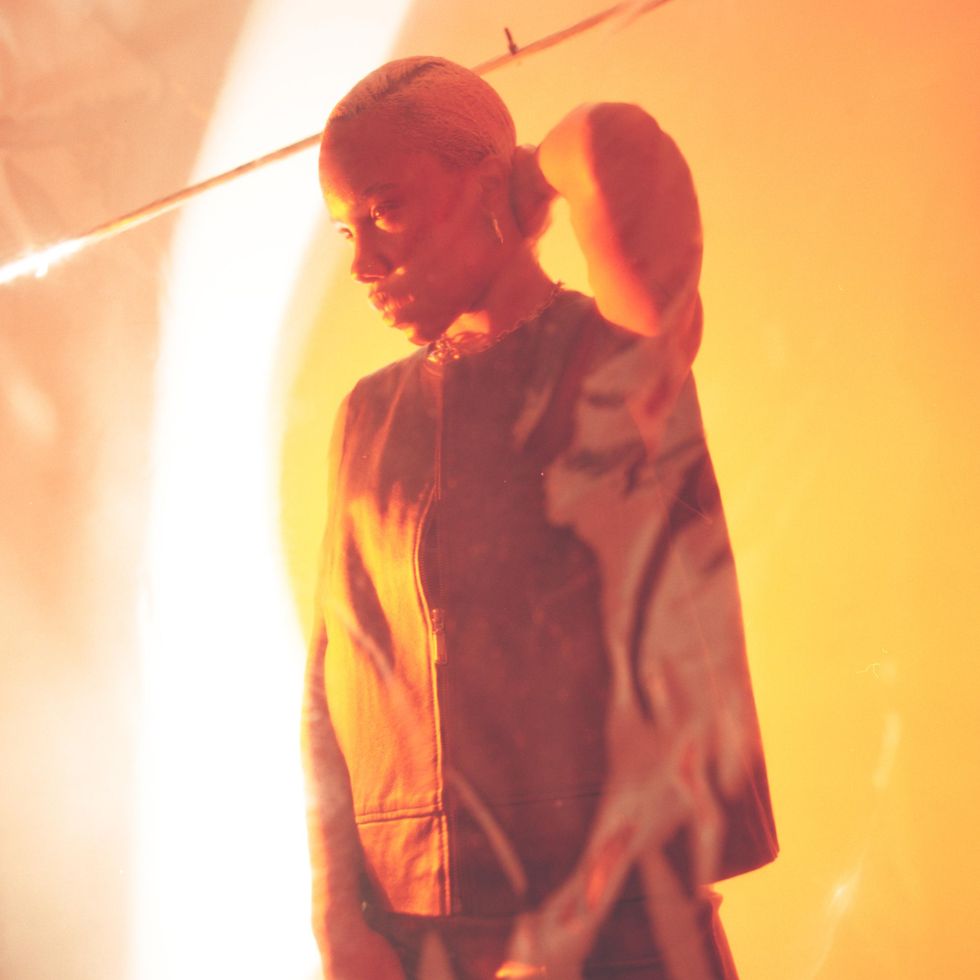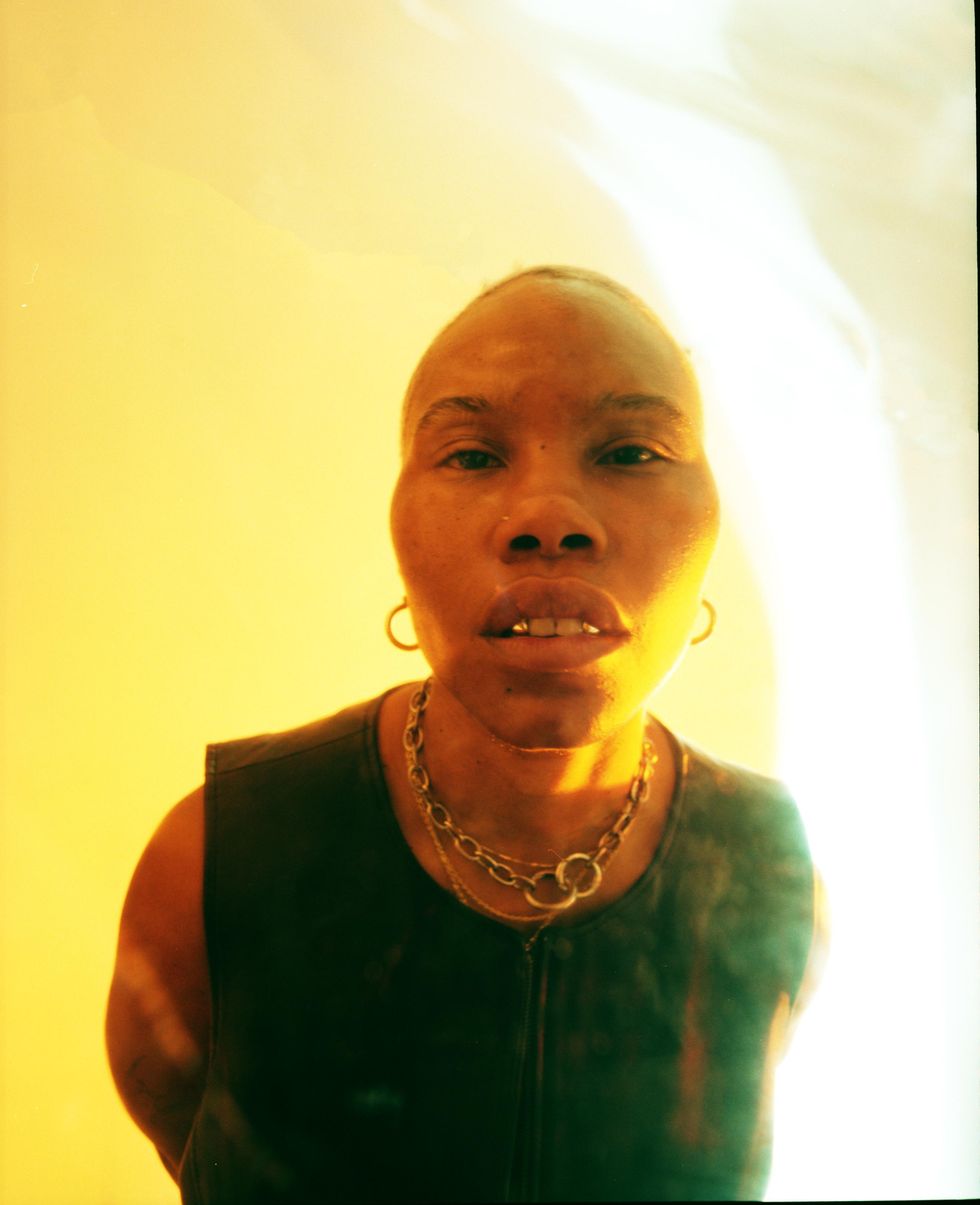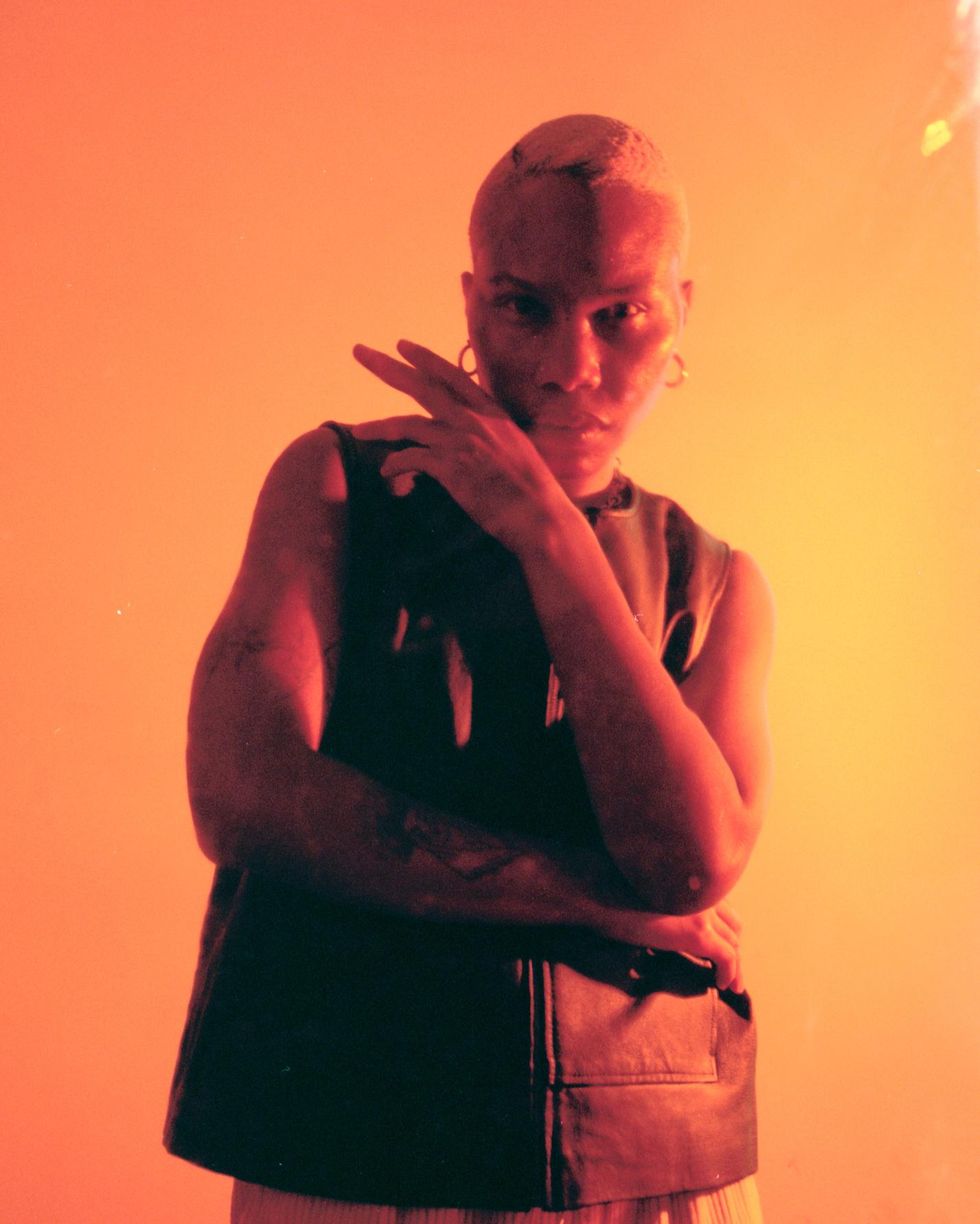
An idea originally grounded in research about Maroon culture and the history of Jamaica — where artist Tygapaw (real name: Dion A. McKenzie) was born and raised — has evolved sonically into their latest collection of work, GET FREE, now available on Bandcamp. As the album title suggests, it's inspired by the feeling of Detroit's The New Dance Show in the '80s and '90s, and speaks volumes about personal liberation and a desire for freedom.
Tygapaw's latest effort was made entirely during the pandemic with a concept undeveloped until mid-summer, following a three-song EP that came at a pivotal moment for justice in 2020's timeline. In June, they released Ode to Black Trans Lives, created in response to Black trans women whose murderers never face justice and the resurgence of the Black Lives Matter movement "not involving Black trans lives."
Tygapaw made two of the three tracks in a single day, and was inspired to write a "call-to-action" when they saw division between two protests, both in Brooklyn and not far apart. They recall how one group marched to assert that "Black Lives Matter," while a separate movement centered on Black trans lives. "This is the whole point; it's a collective effort. We have to all join in together," Tygapaw says. "And for the same cause; we're not separated in this."

Following Ode to Black Trans Lives, Tygapaw got to work on the research and introspection that would become GET FREE's 11 tracks, released now a decade into their musical journey. They wanted to create something out of 2020's "complete mess," and invited in collaborator, poet and lyricist Mandy Harris Williams, who performs the only spoken word on the otherwise completely techno-inspired project.
Williams brings a powerful presentation of poetry to the album, opening its introduction — a bold, cinematic entrance to GET FREE's larger themes — with lyrics that speak to the experience of finding independence. "The ground shifted beneath her feet," she says. "Could she move them, as well?/ It had been hard to get the others to hear her out initially/ She felt, instead, release."
The poet's work, featured on three of GET FREE's songs, supplements the already powerful sonic message behind Tygapaw's debut album. Vibrant, pictorial track intros meet nostalgic club beats over the course of the project, developing relief to the sentiment of lost freedom with stunning cover visuals by Avion Pearce. "Some of us had to get free/ And some of us might."
PAPER recently caught up with Tygapaw to discuss the inspiration behind their debut album and how Williams' work contributes to the project's greater mission.
It's been a tough period of time, especially for the music industry. How have you been focusing on your mental health?
Pre-pandemic, I've always been good about exercising a fair share of self-care, meaning that I've done the work to remove toxic elements that come in several forms, whether it be food, people, whatever it is. I just paid attention to my health, on more of a regimen of exercising three days a week, and I was doing weightlifting and strength training and that has helped a lot with my mental health. Not everybody can, but I pushed myself to do that and that was one of the things that really helped during the pandemic because I continued to at-home do the exercises. Of course, diving deeply into making this album, my debut album, to me is exercising self-care because it's centering my passion.
How long had you been working on those three tracks off Ode to Black Trans Lives?
Only one of [the songs] was a previous composition I did on my Pioneer Works residency the year before. I was a resident there in summer 2018. The "Scene 3" track, the last track, is this sprawling, emotive symphony of electronic music that I always wanted to have a home for. It was supposed to be on my Handle With Care EP, so I used that as a starting point. But the other two tracks I made in a day and in response to the Black Lives Matter movement, which ignited again during the pandemic after continuous police brutalizing Black people. And in response to that, but also the conversation around Black trans women being murdered at an astronomic rate and no justice being served, but also the conversation with the Black Lives Matter movement not involving Black trans lives.
So it was a call-to-action, and then the response of the protests that happened in front of the Brooklyn Museum. I was there and passing through, and then took note that there was the Black Trans Lives protest and simultaneously, in the Flatbush and Grand Army Plaza area, there was a Black Lives Matter protest happening. They were wearing black, and that divide, it was so jarring. This is the whole point; it's a collective effort. We have to all join in together and for the same cause. We're not separated in this.
There's this complete unspoken divide within Black communities that we don't want to talk about. We don't want to talk about transness and the transphobia that's rampant within the Black community. And also the things I've experienced as a queer Jamaican, and understanding the brutality associated, just the hate that derives from structures that are not even a part of our history. These aren't taught, these are associated with Christianity. That's not even our religion; that's the colonizers' religion. I wanted to broaden the audience to be able to hear these very powerful, important words. So I really did that EP in a day.
"Let's try to create something of beauty out of the complete mess of 2020, and that was really my purpose."
When you were working on Ode to Black Trans Lives, had you already started GET FREE?
I already started to conceptualize it and do research, buying all these books. Everybody always tries to focus on the physical creative process of albums, but it's a lot of head work. The way I always approach creating music is the way how visual artists approach creating. It's a lot of conceptualizing and writing; the thought process is very long for me. But Ode to Black Trans Lives was an immediate spark. I didn't plan it; it's something that was very spontaneous, and that's why that EP's so beautiful because I didn't hesitate, I just did.
For GET FREE, I started to physically sit in the studio and make it in the beginning of July. I wasn't even trying to seek doing; I knew that I had a timeline for the album, because I was releasing it with NAAFI and then they had their deadlines, but I'm not one to power through a process if a song is not working for me. So I figured this is the best time I could possibly ever write. It's weird enough, because I had a lot of clarity. I know how to repurpose anger and settle myself and approach with love. That's a lot of work that I actively had to do. If there's hate on the horizon, I will be like, "No need to project all that energy onto me." Let's try to create something of beauty out of the complete mess of 2020, and that was really my purpose.

How did GET FREE evolve after you first started working on it?
Things have shifted conceptually, because I was going to do this album that was a little bit more experimental in regards to the kind of research I was doing around Maroon culture and in Jamaican history. I used elements of that research and also the influences, because I watched Brian Eno's documentary. I was watching that and the process, but understanding what kind of artist he is. The different elements that drove me into ultimately creating GET FREE is a perfect meeting of the right timing, the right place, the instruments that I was able to attain during that time. I bought an MC-505; it's a groovebox, but it's an older, of the rave era-style. I really leaned heavily on using a lot of the sounds out of that box, and then I also had my Digitech, so sequencing drum loops on that. I was able to create this efficiency in making tracks.
One day, I had this spark of inspiration, so I managed to do three tracks in one day. It's the kind of practices that helped to create the album — to compose and write the album in one month and then in August, sitting down to focus on mixing the tracks and Loric [Sih], who works with Kelela, helped do the sound engineering and mixed the album with me when I was at his studio in Williamsburg. It was a perfect meeting of the right people. Mandy Harris Williams, too, is the voice, I'll call her. Definitely the way how I pitched it to her as, "I want you to be the narrator, like a Toni Morrison-esque presence in the composition." And I was like, "You will introduce the album, then have an interlude and then the conclusion at the end." She was so game and we had such beautiful conversations in the beginning. That's also a huge part of the process, because we did a lot of talking about it in June. Once I gave her my ideas behind the concept, I gave her a bit of background on the research I was doing around Maroon culture and we were able to conceptualize a whole new world that we wanted to create for the album. It really just worked in a beautiful meeting of minds.
Did Mandy write the poems she recites on GET FREE?
That's all Mandy's poetry, absolutely. The way I collaborate is that if I invite a writer to be involved, I want their style of writing. We can we can both vibe and get the concept together, but ultimately, those are Mandy's words and presentation. I will compose this music and however you feel compelled to perform your words, it's up to you. I never want to tell vocalists and artists how to perform their words. Even though we walked through the entire process and conceptualized together, Sometimes with me, I'd like to hear the words and then compose to it. But we did it the other way, where she really wanted to hear my compositions. So I shared a Dropbox folder. As I worked on tracks, I dropped them in there and she could listen to them. Even the tracks she's not on, I wanted her to get an idea of the full body of work so that she could write to that and, ultimately, that was the best process because I was floored at the very end. Mandy ended up giving her vocal performance at the very end and then I added it to all of the mixed tracks. So it was a really gorgeous experience.
"I allow things to simmer and I'm not one to force anything. That's my process."
In terms of GET FREE itself, did the name of the album come first to you?
The name of the album did not come until the actual image. It came at the very last minute of completion of the album. All the songs were made, and I still was struggling with a name from it because, initially, the high-concept album around Maroon culture, I have a name for that. I'm not going to say it, because I'm saving it and still going to do it. But I was like, "I can't use it for this because I moved into a different energy and vibe." For GET FREE, a lot of the inspiration was dance videos from the '90s, specifically, The New Dance Show that was filmed out of Detroit in late '80s, early '90s. It was such a vibe; basically the Soul Train model, but with Black people getting down, dancing to the pioneers of techno in Detroit. That was incredibly inspiring to me, and that's what really sparked a shift musically into doubling down on, "I want to make this high-concept techno album."
So I didn't have the name, but freedom was a recurring theme within working on the tracks. "Run 2 U" was the second [track on the album], setting the tone. It helped me to create the rest and keeping that tonality, but also venturing into my previous sort of experiment. The way I thoroughly enjoy exploring synth sounds and pad sounds and making sprawling, really extra cinematic compositions and injecting techno beats into it. I just wanted to make it fun and maintain that energy and vibe that inspired me, watching The New Dance Show videos. GET FREE only came at the very end. It really came together when I had to put the cover art together, working with my girlfriend, Avion Pearce, who shot the cover. Right before we shot the cover is when I decided on a name: GET FREE.
Everything seems to come to you the moment before.
I think that's because I allow things to simmer and I'm not one to force anything. That's my process.

Which tracks on GET FREE do you think are the most reflective of who you are as an artist, right now?
"Facety." I specifically know I made that track in mind when DJing and being able to present that and watching the response. Usually, my DJ sets are very high-energy focus, percussively intense but very rhythmic and that's a really good signifier in style. "Ownland" is also a big one for me, but "Untitled Fantasy" was such an enjoyable song to make because I had no inhibitions. I was just like, "Make the thing," and did not restrict myself, sonically. I remember in the moment, I was thinking about Sonic the Hedgehog on Sega Genesis. I don't know if you remember Dreamcast, but there's this video game and the avatar looked like a jester, so it looked like Sonic but it wasn't and that sound, it reminded me of the sound that I selected for it. I think I was mentally in a video game simulation, being high and working it [laughs]. But it was so much fun. When I get to a point where I have the base structure arranged and everything, then I like to improvise and just play. It's just one take, I just go. So that way of writing, the structure of that song is really special to me because it was just one go. It took me maybe two to three hours, and then I just went hard. It's like my own avatar, my own video game simulation.
I'm obsessed with the fact that Sonic the Hedgehog was the answer to that question.
My head was in the clouds thinking about the rings, the sound that the rings make when you collect them. I do love video games; I really think it's some of the best electronic music that marries my very cinematic motifs into these virtual worlds. "Run 2 U" is that serious banger I'm excited about. The beautiful thing about the album is that they're all a piece of me. They're all iterations of myself that I have explored sonically throughout my life, throughout creating my first three EPs, and I'm just doubling down on those sounds and processes.
"There is good in this world; there is possibility that goodness can prevail. Love makes us overcome the worst situations."
When people listen to GET FREE for the first time, what do you want them to take away from it?
Just what liberation feels like. When you truly embrace love as a means of healing, of stepping into a space where you do feel free, you don't feel inhibited. And you can enjoy listening to this album in multiple settings. That was another conscious thought I had when creating an electronic, techno-centered album is that a lot of people see techno in a dark, moody lighting club. No external light, no natural light, but I wanted to marry the idea of being able to consume and listen to this album in your living room, your bedroom. I think about my younger self and when I did listen to electronic music or Nine Inch Nails — "Head Like A Hole" or "Closer" — those are very danceable songs, but they have different ways that you can consume it. It doesn't all have to be a turn up, but when you're ready to turn up, you can with it. So GET FREE is to leave the listener with the feeling of hope for the future, that all is not lost. There is good in this world; there is possibility that goodness can prevail. Love makes us overcome the worst situations.
Is there anything else about GET FREE that is important to include?
The cover with Avion and the whole packaging. I worked creatively with two Black, queer women and that was a very conscious decision of mine to limit it in a way where the influences and people I collaborate with, I want to champion. Black women are incredibly talented and when we come together to create something, look at the beauty we create. [I wanted] to pay Black women and give them opportunities. Trans women, Black women and to provide opportunities for us to thrive in this world because women are amazing. I love the fact that I had these two Black women who gave themselves to the process wholeheartedly. I feel very blessed and honored to have them be a part of the process of making this album.
Photography: Avion Pearce
Related Articles Around the Web